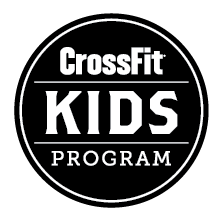Ring Dips are something that a lot of us struggle with, and are ultimately, a hurdle we must jump to acheive muscle ups.
Check out great few pointers from “The Box Magazine” on how to progress your ring dips and have a think what you need to work on!
1. Static Hold
Achieve a position in which you are able to hold yourself steady in the top position with your elbows as straight as possible. Position here is critical, as is strength of the triceps and horizontal fibers of the pectoralis major, both key players in the ring dip.
Consider this a “hollow position,” and as such focus on squeezing your glutes and abs while at the same time keeping your hands pinned to your sides. Maintaining this midline and core stability can be more difficult than it looks.
2. Controlled Descent
Descend slowly from the static hold. Contrary to some CrossFit coaching, you do want to drop your chest forward because it will lend more pectoralis involvement and ultimately more strength.
As you descend, your elbows should move straight back, not to the sides. If your elbows flare out, you’ll lose some triceps force. It’s helpful to think of squeezing your shoulder blades together behind you.
3. Repeating Jumping Ring Dips
After you have mastered the static hold and slow descent, tie them together with a jumping ascent. Here is where you begin to work on fluidity and pace. Try to develop a rhythm, and don’t worry that you can’t press up yet without assistance.
This is where it’s easy to let the rep-after-rep pace break your technique. Remember, don’t arch your back or stick your butt back behind you. Too much of an arch as you descend takes your shoulders out of anatomical position and causes you to lose mechanical advantage. This is why we don’t recommend the use of bands when scaling; it’s far too easy to arch when using a band because one knee is in front of you and your hip is already in a flexed position.
4. Kipping Ring Dips
Once you can accomplish the three steps above, you can begin kipping your ring dips. After descending under control, bend your knees and bring them up to about the level of your waist. Now kick down hard and immediately push up hard. In order to use the momentum from your legs, the timing of the push following the kick is critical. Imagine the movement as a slingshot and kick, then immediately push. If you push too soon, you won’t maximize the impulse generated by your kick.
5. Full Ring Dips
Unless otherwise specified, kipping ring dips are perfectly acceptable. However, if you’re able to perform ring dips without a kip, don’t rest on your laurels. Continue to work on them, possibly even adding weight, knowing that (a) ring-dip fatigue hits quickly and you will want to develop all the strength and muscular endurance you can in this movement, and (b) you can always go back to kipping to eke out a few more reps.
Whether you’re kipping or not, look closely at where your shoulders are at the bottom of the dip. This may give clues as to how easily you can perform muscle-ups. That is, if you can get your shoulders comfortably below your hands, you won’t have to pull as high on a muscle-up as an athlete who can’t get that low.
Credit to – The Box Magazine



